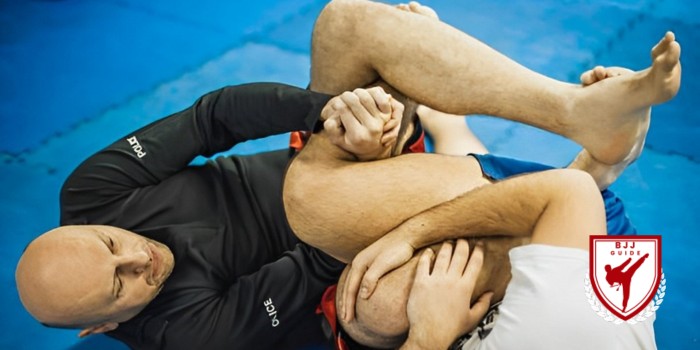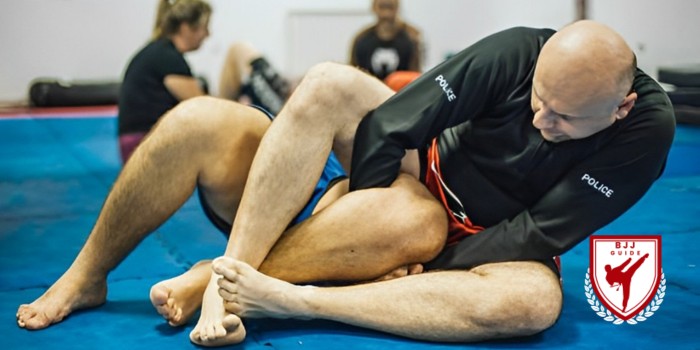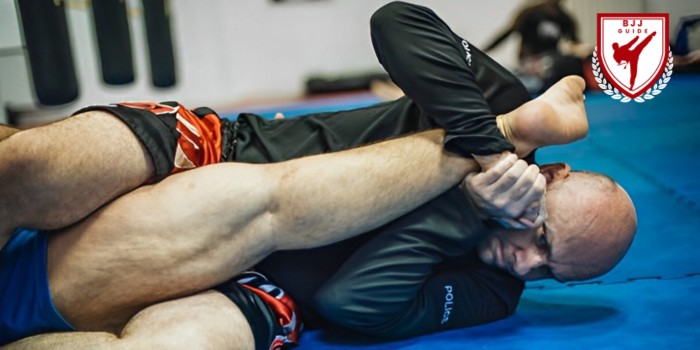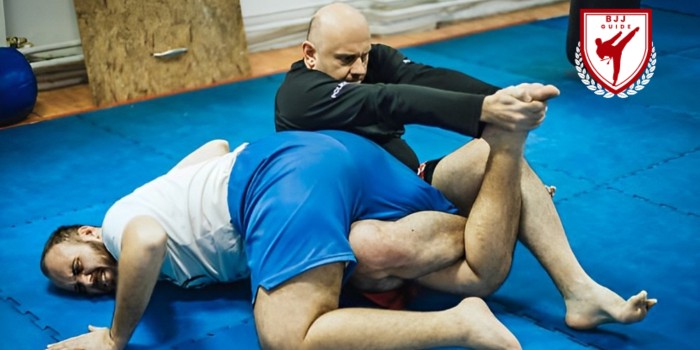Brazilian Jiu-Jitsu (BJJ) is a martial art renowned for its intricate techniques and strategies. Among its vast array of moves, leg locks stand out as both effective and potentially dangerous. This comprehensive guide aims to demystify lock legs, offering a roadmap to understanding, mastering, and safely implementing these techniques within your BJJ repertoire.
Understanding Techniques
To begin, it’s essential to define headlock with legs and understand their classification. Leg locking involves applying pressure or leverage to an opponent’s leg joints, typically the ankle, knee, or hip. These locks can be broadly categorized into two types: straight and rotational.
Straight thigh locks include the Straight Ankle Lock, while rotational this technique involves twisting motions, such as the Heel Hook or Kneebar. Understanding these distinctions is crucial, as each type requires different mechanics and precautions.
Headlock With Legs Mechanics

It relies on manipulating the opponent’s leg joints. For example, the Straight Ankle Lock targets the Achilles tendon and ankle joint, while the Heel Hook targets the knee joint’s lateral structures. Leveraging the opponent’s anatomy and understanding the principles of kinetics and leverage are key to executing effective footlocks.
Safety considerations are paramount when practicing lock legs. Always start with controlled resistance and gradually increase intensity to prevent injury. Additionally, ensure proper alignment and never force a lock beyond your partner’s flexibility or comfort level.
Effective Setups Techniques
Grips and controls play a crucial role in setting up locks. For instance, the Ashi Garami position provides a solid foundation for many headlock with legs. Proper positioning and angles are also critical. For instance, the 90-degree angle of the leg in a Kneebar maximizes leverage.
Transitioning smoothly between different leg technique requires fluidity and awareness. For example, transitioning from a failed Heel Hook to a Kneebar demands a rapid shift in positioning and grip.
1. Straight Ankle Lock:
The Straight Ankle Lock is a fundamental thigh lock in Brazilian Jiu-Jitsu (BJJ) that targets the ankle joint. It involves isolating your opponent’s foot and applying pressure to the ankle by creating a lever with your arms. The lock can cause significant discomfort or even injury if applied correctly. It’s important to note that in many BJJ competitions, the Straight Ankle Lock is only permitted in certain age and experience divisions due to its potential for injury.
2. Kneebar:

The Kneebar is another technique that targets the knee joint. It involves controlling your opponent’s leg and bending it in such a way that the knee is hyperextended. By applying pressure to the knee, the Kneebar can cause immense pain and can also result in injury if applied with excessive force. Like the Straight Ankle Lock, the Kneebar is generally not allowed in many BJJ competitions except in specific divisions or under certain rulesets.
3. Calf Slicer:
The Calf Slicer is a leg submission that targets the calf muscle and the nerves around the knee. It involves trapping your opponent’s leg between your body and your arm, then using your body weight and leverage to apply pressure to the calf. The technique can cause pain or injury by compressing the muscles and nerves in the calf and knee area.
Credit: Knight Jiu-Jitsu
4. Toe Hold:
The Toe Hold is a technique that targets the foot and the toe joints. It involves isolating your opponent’s foot and applying pressure to the toes by twisting or bending the foot. The Toe Hold can cause pain or injury by putting stress on the ligaments, tendons, and joints in the foot and toes.

5. Heel Hook:
The Heel Hook is one of the most dangerous tool in BJJ because it targets the knee joint and has the potential to cause serious injury. It involves controlling your opponent’s leg and twisting the foot while applying pressure to the heel and knee. The technique can cause pain, discomfort, or even tear ligaments or tendons in the knee if applied incorrectly or with excessive force.
Remember, when practicing or applying foot locks in BJJ, it’s important to prioritize safety and only use these techniques in a controlled and supervised environment. Always consult with your instructor or a more experienced practitioner before attempting this, and be aware of the rules and regulations regarding this in any competition or sparring setting.
Countering Techniques
Recognizing the signs of an incoming headlock with legs is vital for effective counters. For instance, if your opponent secures a strong grip on your ankle, they may be setting up a Straight Ankle Lock. Learning escapes and defenses is essential. For example, the Heel Hook escape involves stepping over the opponent’s leg and applying pressure to their leg with your hip.
Creating opportunities to counterattack is another crucial aspect. For example, if your opponent over commits to a thigh lock, you may counter by moving to a dominant position or applying a counter leg submission.
Drilling and Training
Drilling and repetition are essential to mastering it. Focus on proper technique and gradually increase intensity. Recommended drills include practicing transitions between different foot locks and simulating live scenarios with a partner.
Partnering for safe and effective practice is crucial. Ensure your partner is aware of your experience level and always communicates during drills and sparring sessions.

Practical Applications
In BJJ competitions, this can be powerful tools. However, they should be used judiciously, as over-reliance on it can lead to predictable patterns. Incorporating it into your overall game plan adds versatility and unpredictability.
Self-defense applications of leg submissions are limited due to their potential for causing severe injury. However, understanding how to defend against it can be valuable in certain situations.
Common Mistakes and Pitfalls
Over-reliance on it is a common mistake among practitioners. Remember that BJJ is a holistic martial art, and thigh lock should complement your overall game rather than define it.
Ignoring safety protocols, such as starting with controlled resistance and tapping early, can lead to unnecessary injuries. Misunderstanding rules and etiquette regarding it in different settings can also cause confusion and frustration.
Conclusion
Leg locks are a fascinating and effective aspect of Brazilian Jiu-Jitsu. Understanding their mechanics, practicing safely, and incorporating them into your overall game plan can enhance your BJJ journey. Remember to seek guidance from experienced practitioners and instructors and always prioritize safety and respect.
FAQ's (Frequently Asked Question's)
Q: What does the leg lock do?
This is a leg submission technique used in martial arts to control or manipulate the leg joints, causing pain or discomfort to the opponent, with the aim of forcing them to submit.
Q: Is a leg lock painful?
Yes, when applied correctly, this can be very painful, as it puts pressure on the targeted joint and surrounding tissues.
Q: Is leg lock illegal?
This technique are not inherently illegal, but their usage may be regulated in different martial arts competitions and rule sets to ensure safety. Some may be prohibited due to their potential to cause injury.
Q: What does it mean to lock your legs?
“Locking your legs” usually refers to straightening your knees and squeezing your thighs together to create stability or applying pressure to a leg joint to restrict movement.
Q: Best leg lock instructional now?
Some highly regarded instructional resources include Eddie Bravo’s “Mastering the System,” Bernardo Faria’s “The Ashi Garami Seminar,” and Lachlan Giles’ “The Leg Lock Anthology.” These provide comprehensive guidance on these techniques, setups, and strategies. However, the best instruction may vary depending on your skill level and preferences.


